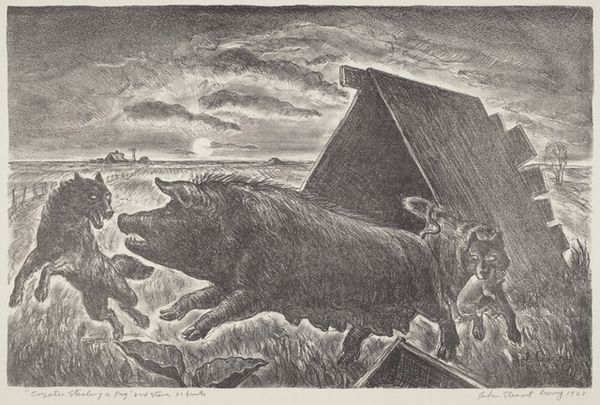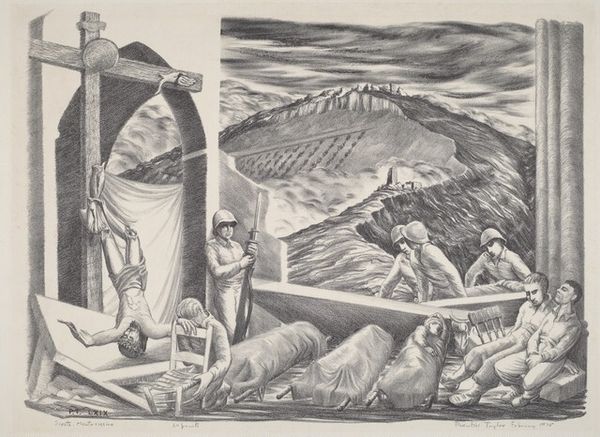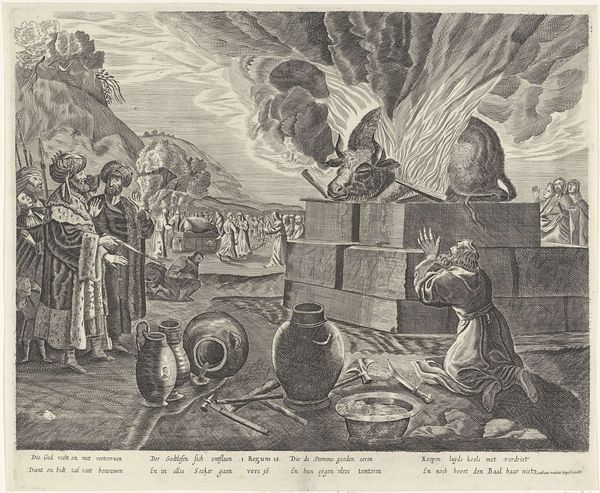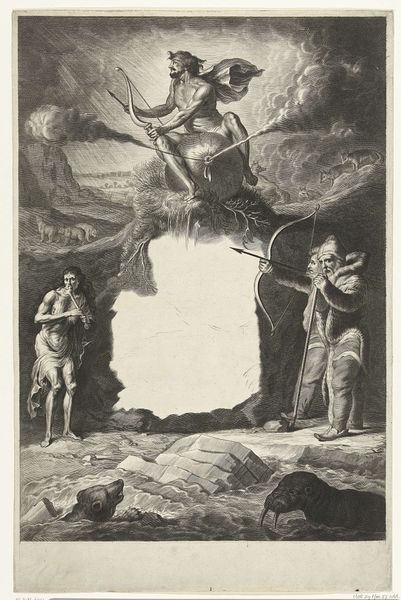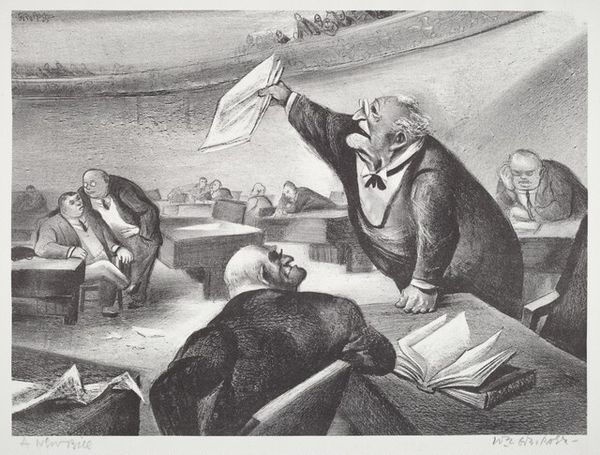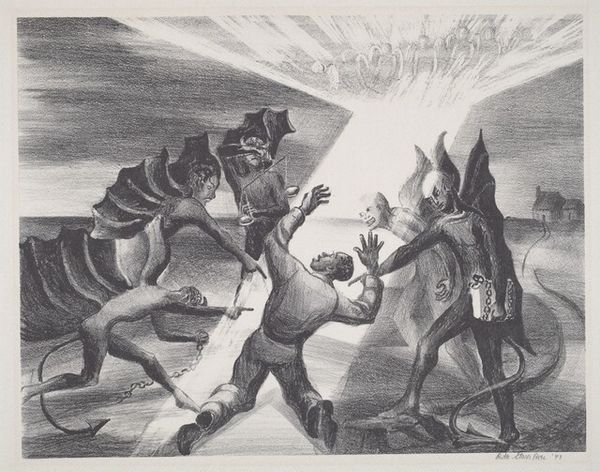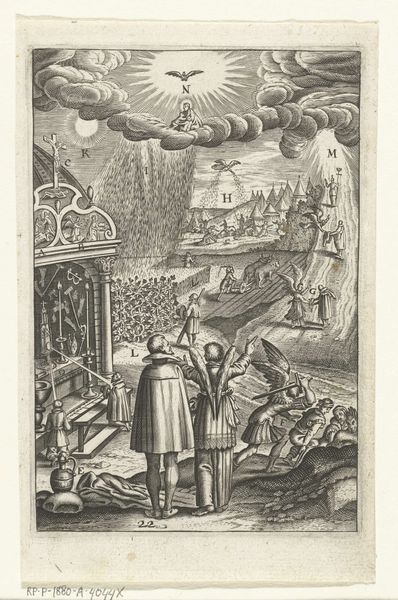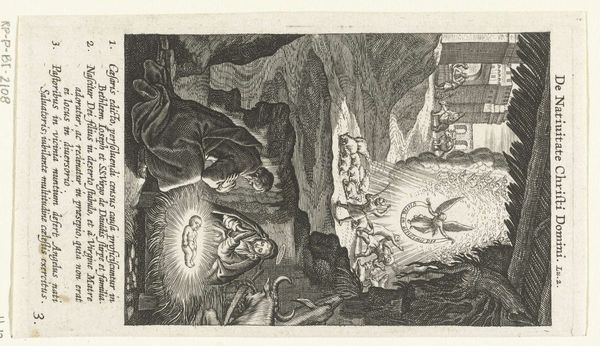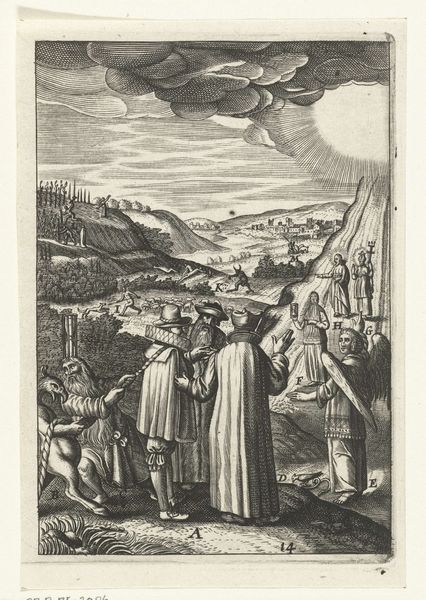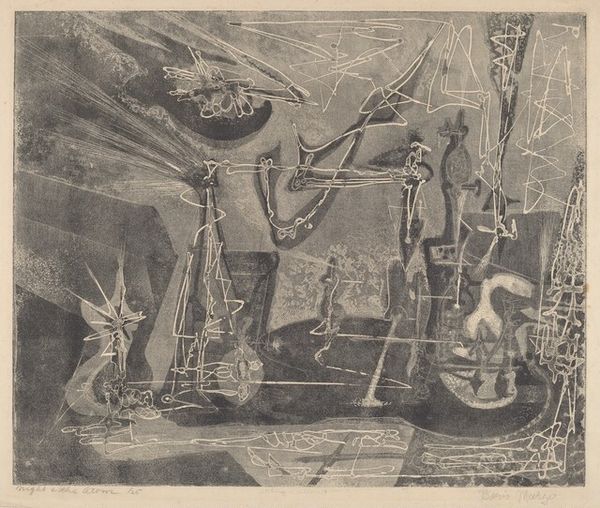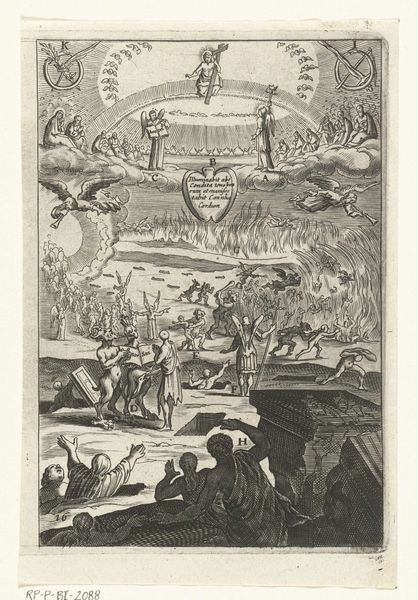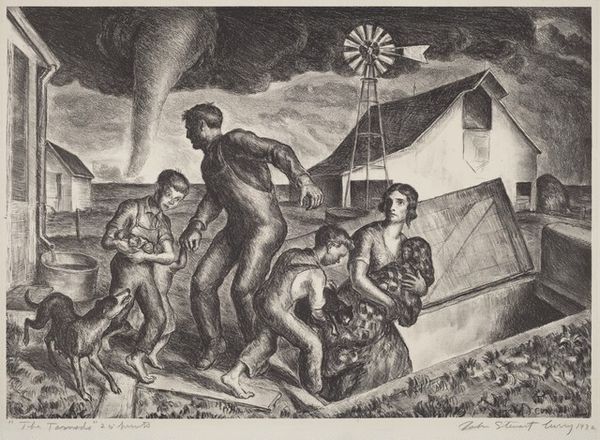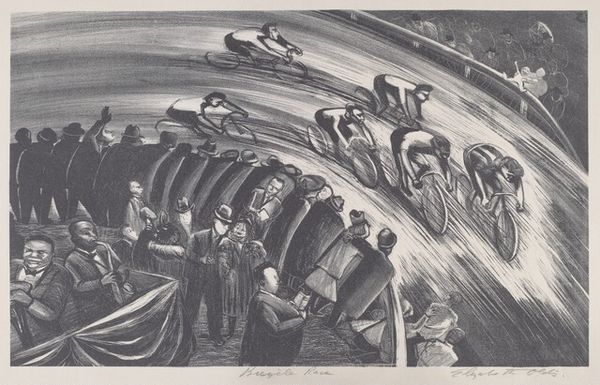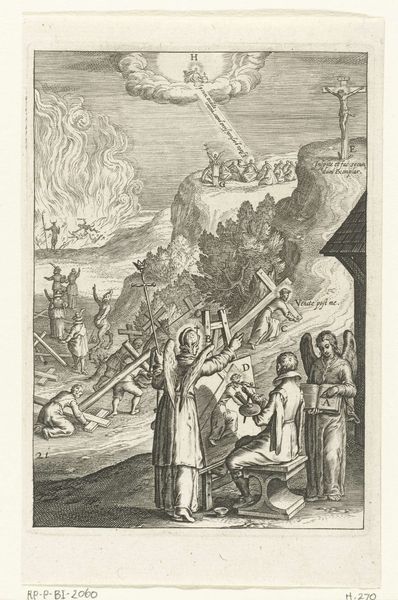
Dimensions: image: 252 x 327 mm sheet: 346 x 455 mm
Copyright: National Gallery of Art: CC0 1.0
Curator: "Pharaoh's Army Got Drownded," a graphite drawing by Ruth Starr Rose created in 1939. It strikes me as a very narrative piece with layered symbolism, would you agree? Editor: Yes, initially I find it brooding, even with the symbolic elements. The tonal range, from dense graphite to bare paper, cultivates a somber, intense visual atmosphere. The mark making contributes powerfully. Curator: Absolutely. Beyond the stark contrast, it seems rooted in a deep spiritual language. We have what appears to be an African American congregation being led, perhaps by an angel, away from a roiling body of water where some figures drown while a steam boat idles nearby. The scene's framing by pyramids on one side and a winged devil-like creature on the other pulls at various cultural references. Editor: The pyramids certainly complicate any simple reading. Are they representative of the oppressive, ancient world—literal Egypt—or are they visual devices constructing a visual rhyme, a shape mirrored by the churning waves? Even the texture on these pyramidal masses is interesting, quite active when considered against the faces in the throng... Curator: I think Ruth Starr Rose intended multiple layers of interpretation. Trained at the Art Students League, Rose moved to Maryland's Eastern Shore where she engaged deeply with the African American community, becoming immersed in their spiritual traditions and social realities. This piece visually references the Old Testament story of the Exodus, of course, resonating deeply within African American spirituals, but there’s also what I interpret as more recent visual associations: the steamboat invoking the Underground Railroad or the Mississippi River. The smokestacks near the top spewing exhaust take on a quality beyond the representational—it becomes a comment on the trials, resilience, and navigation through the turbulent currents of history. Editor: Well stated. The formal decisions create a powerful synthesis—how the shapes are arranged generates tension, how the varying textures guide the eye. The bright beam slicing through the composition does more than light the figures below; it almost performs a kind of spiritual incision. The success hinges on Rose’s mastery of composition and tonality. Curator: And ultimately on her awareness and integration of visual metaphor from both art history and the present. The piece asks us to actively contemplate a lineage. Editor: Precisely, and it’s within that active looking where it generates meaning.
Comments
No comments
Be the first to comment and join the conversation on the ultimate creative platform.
